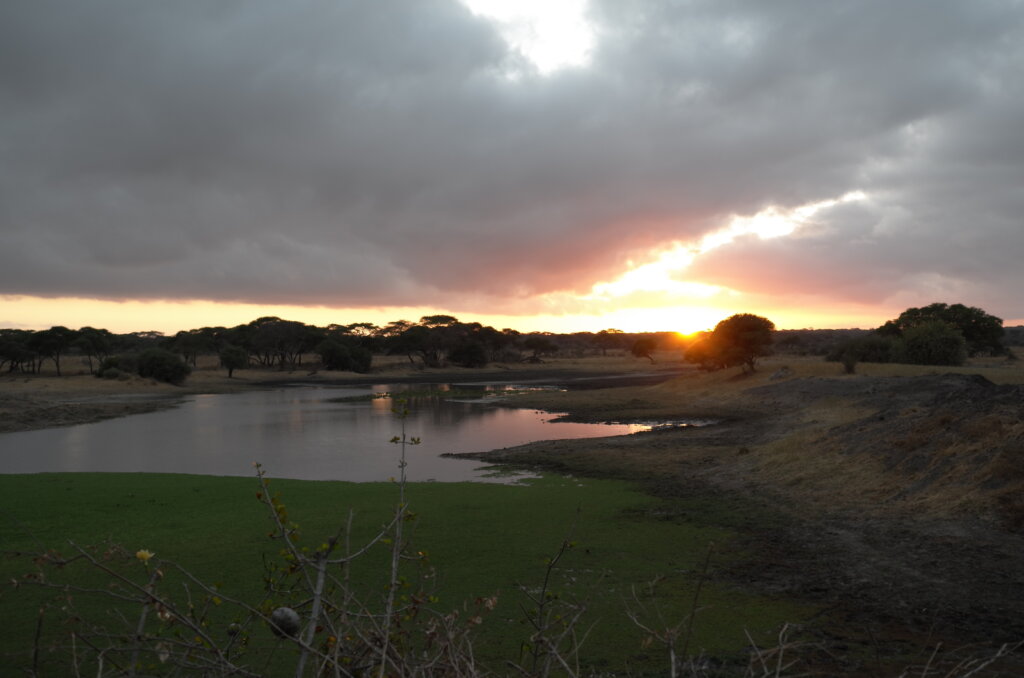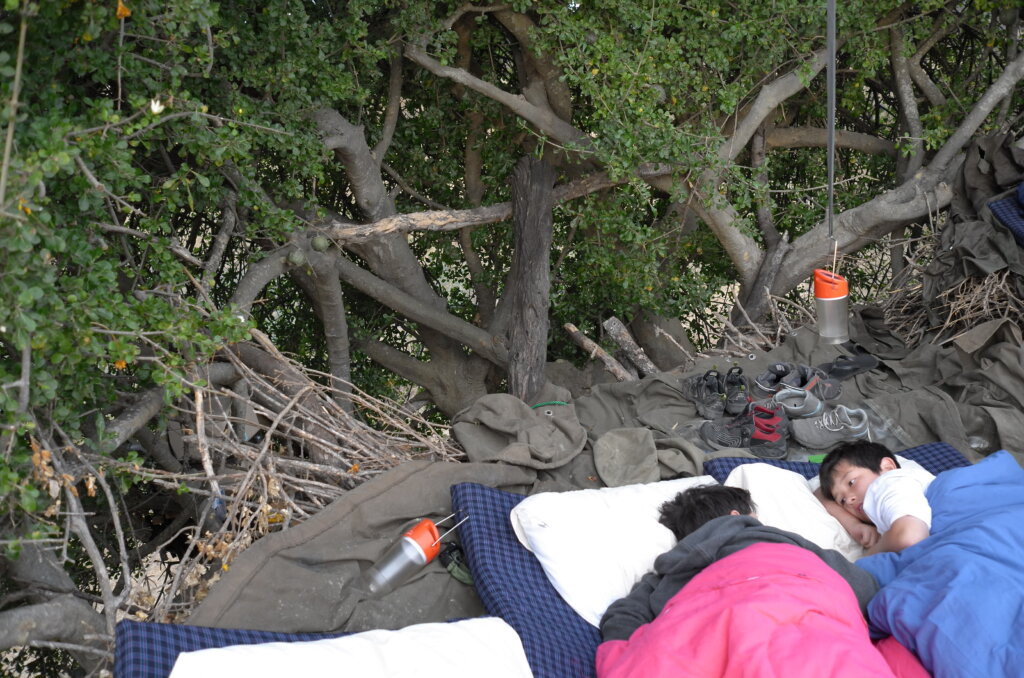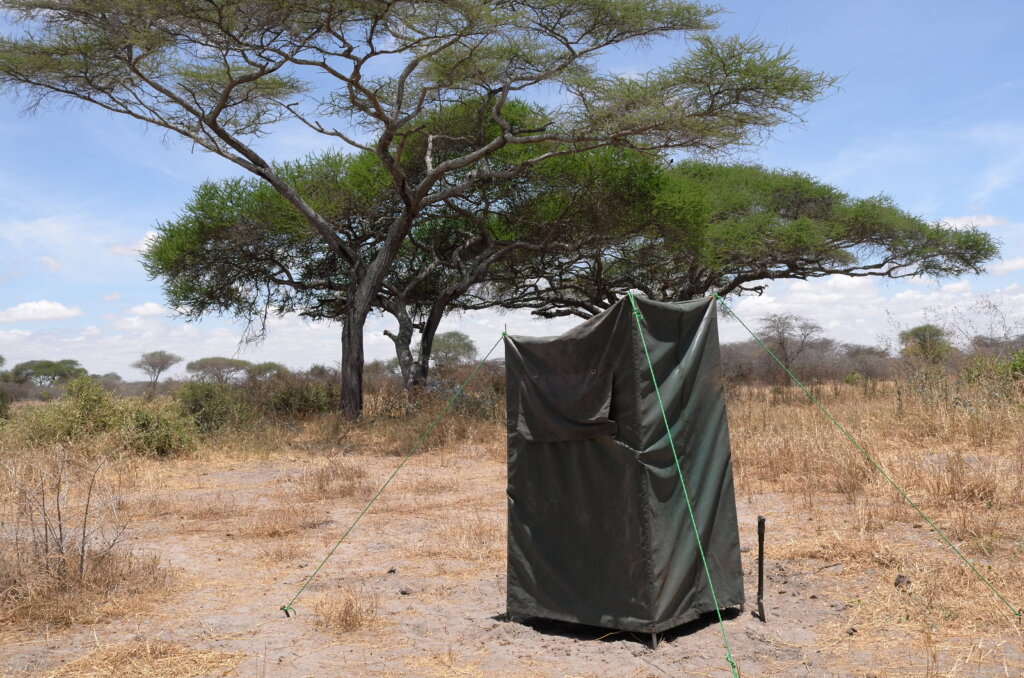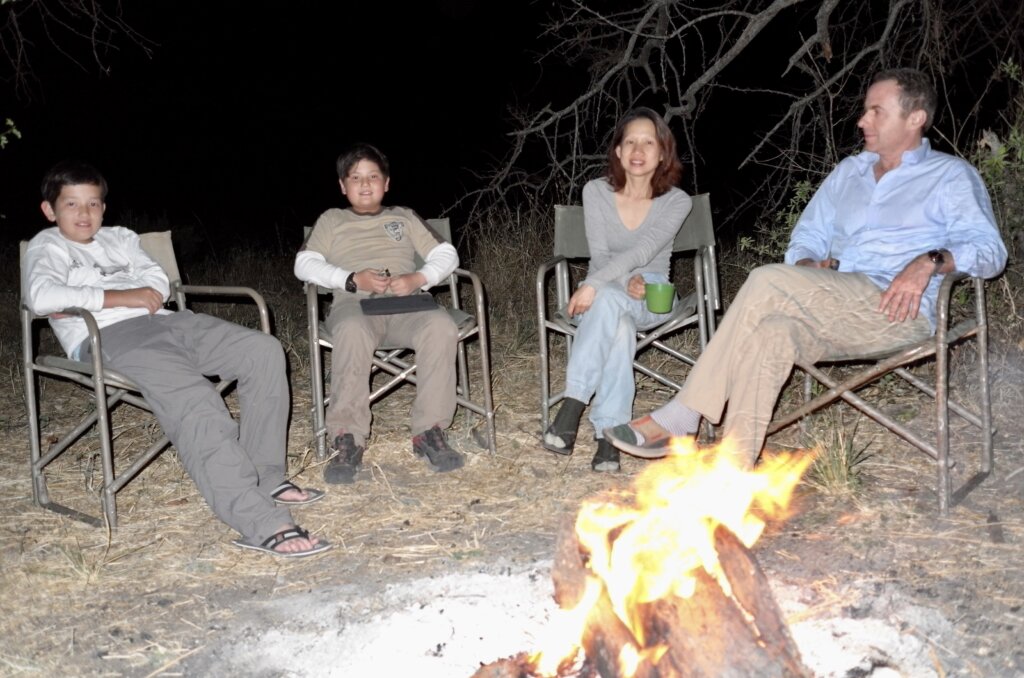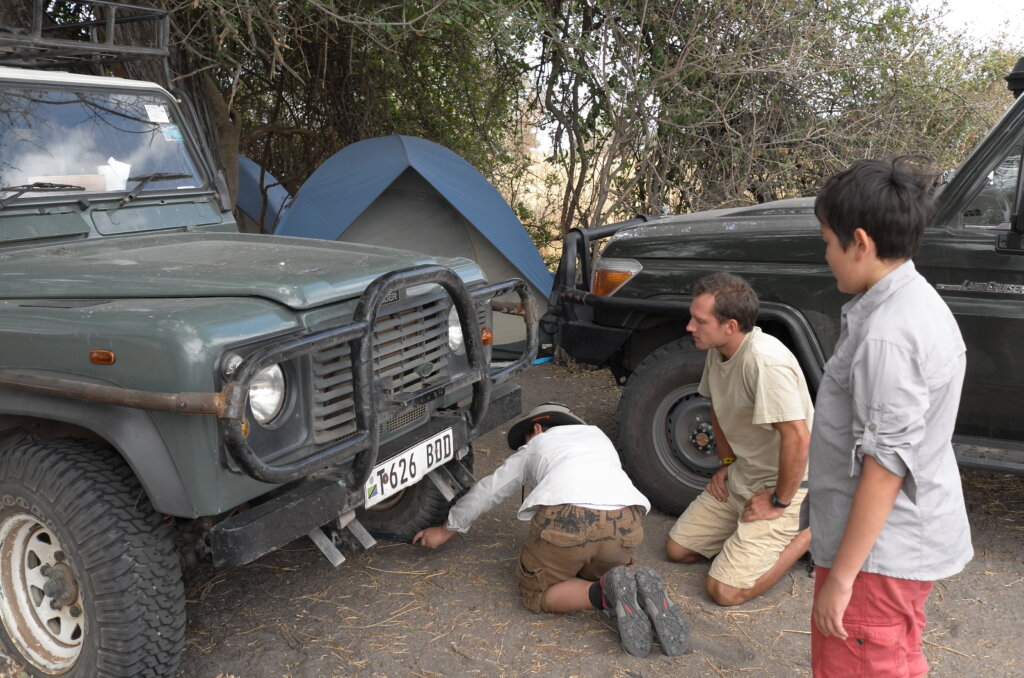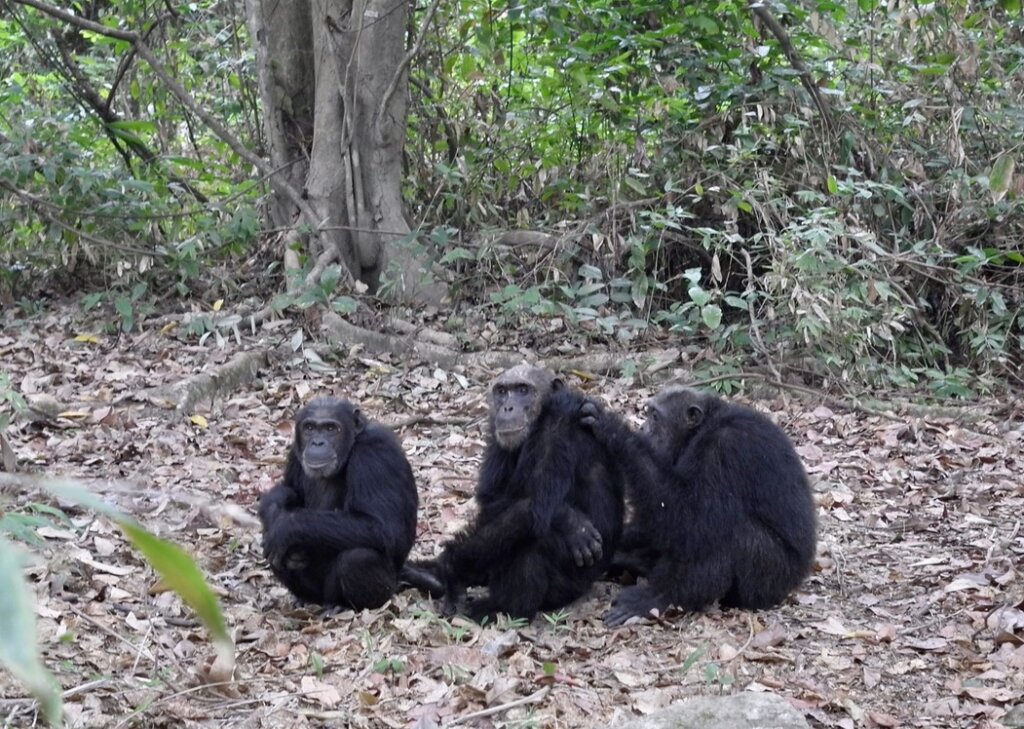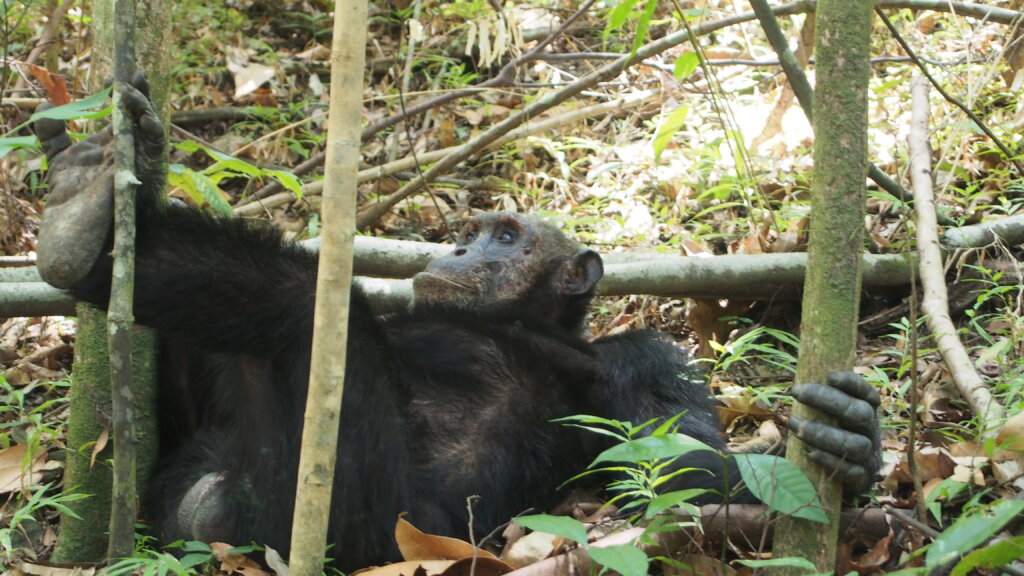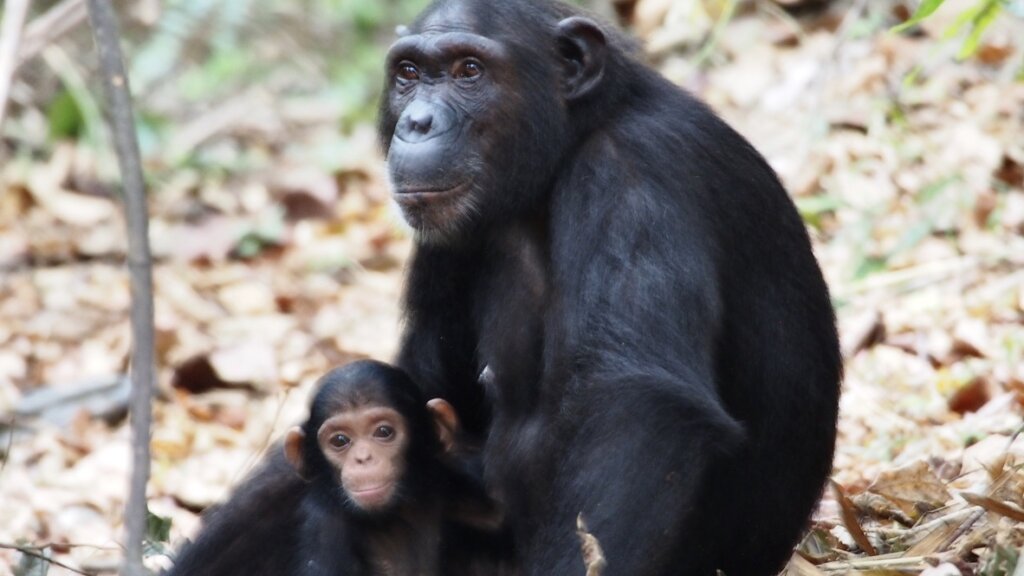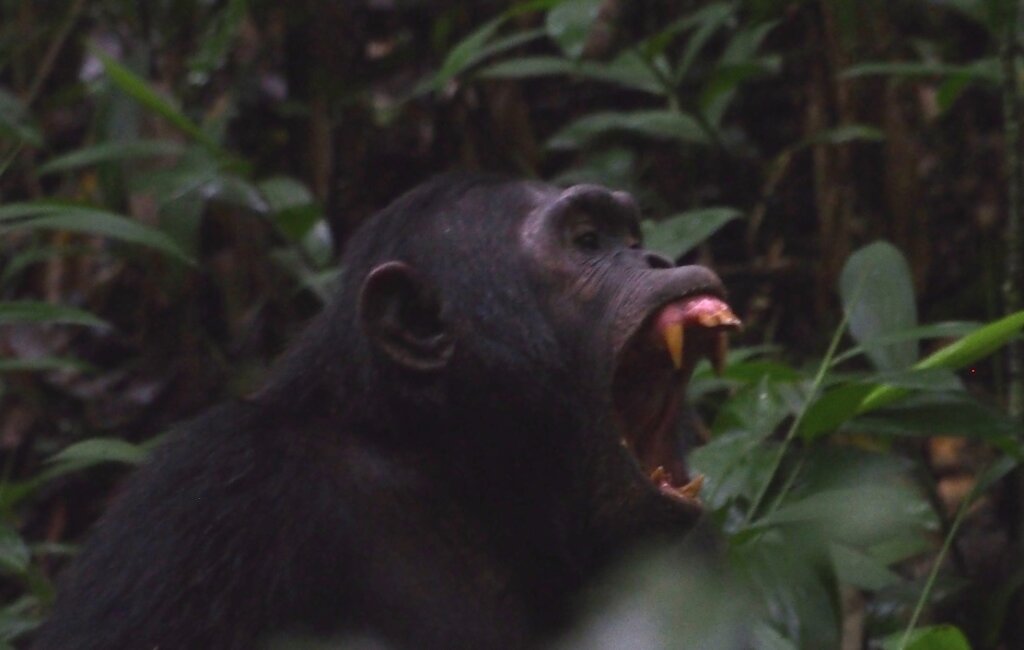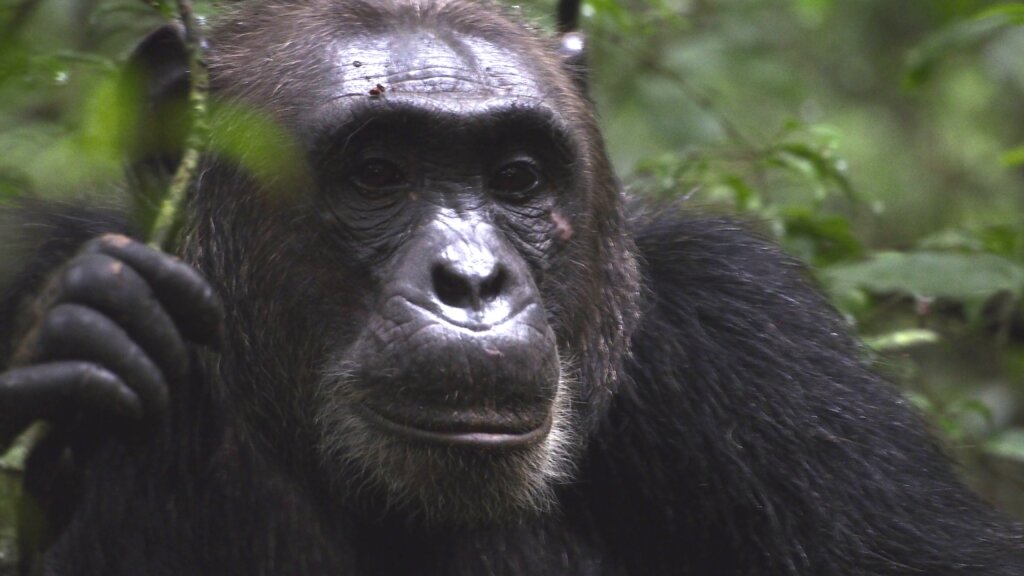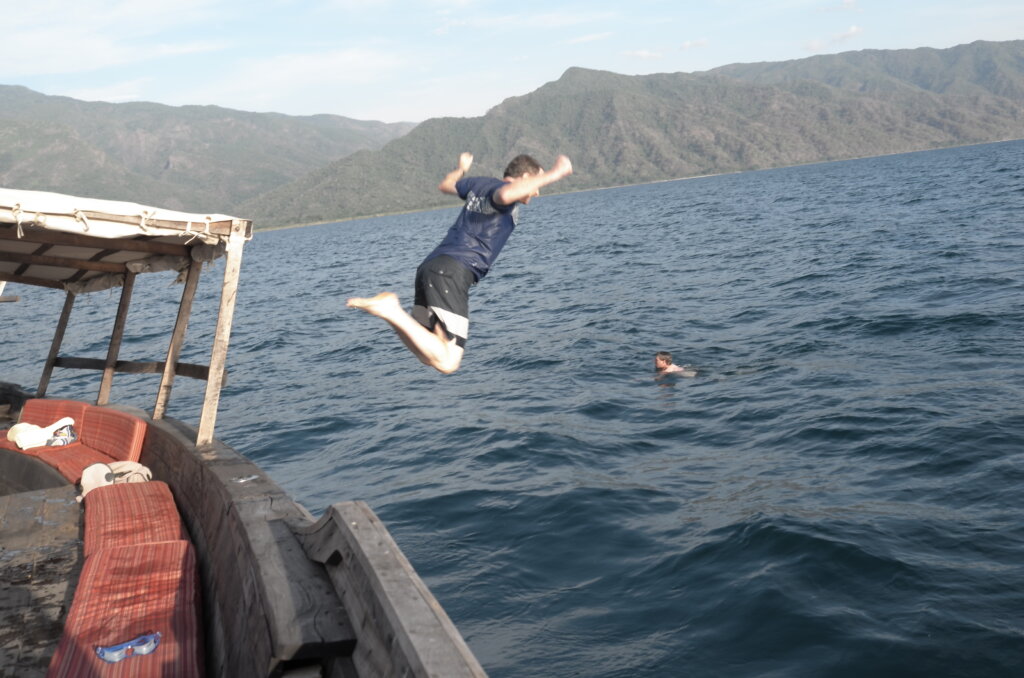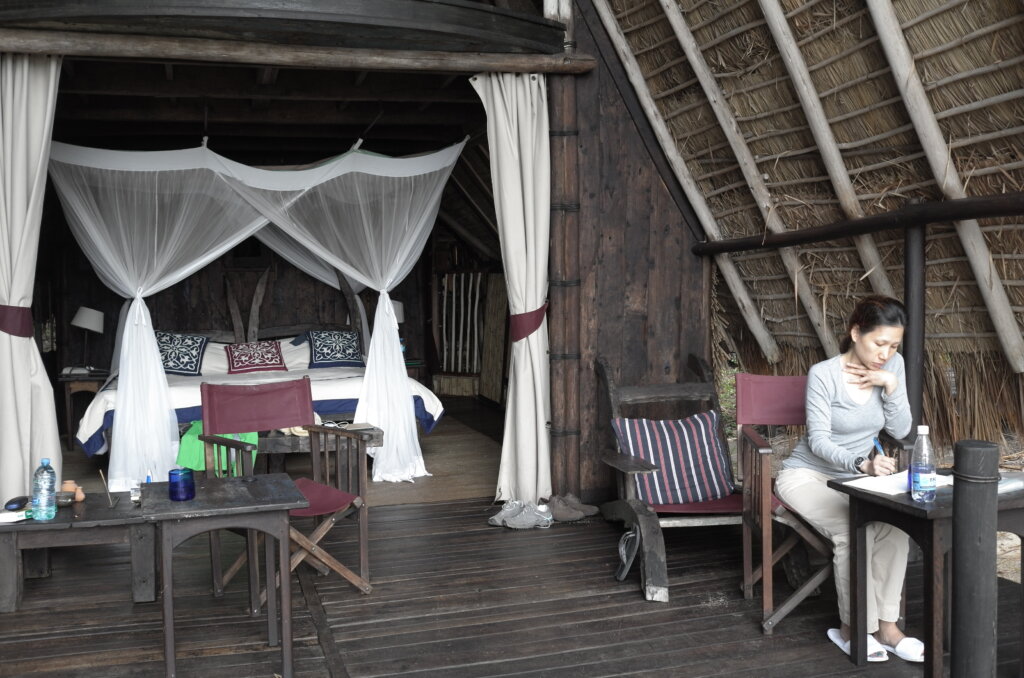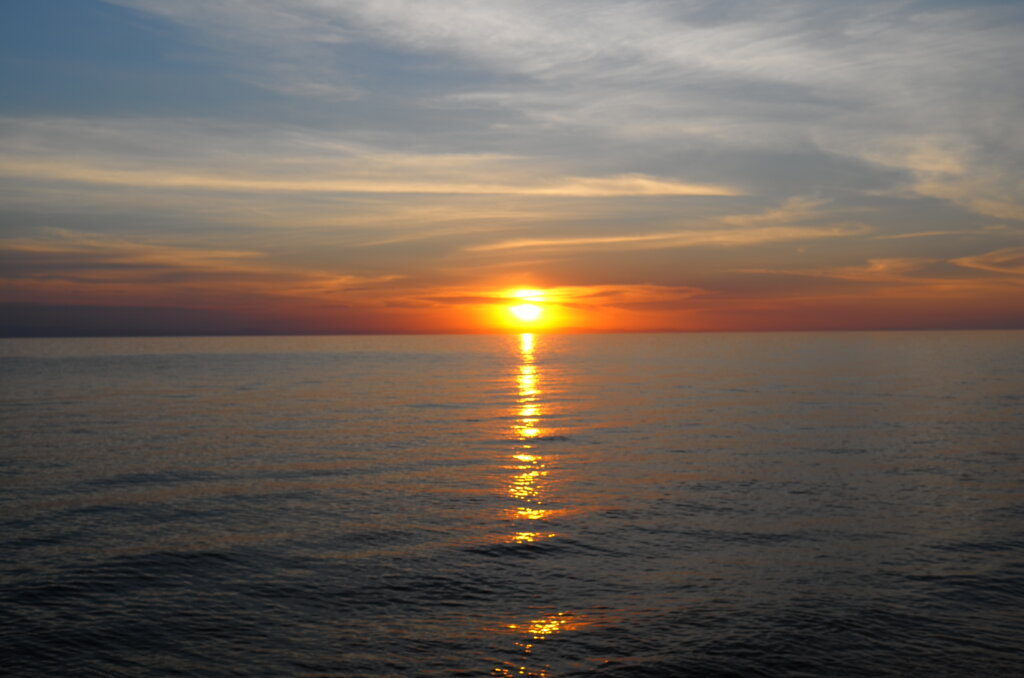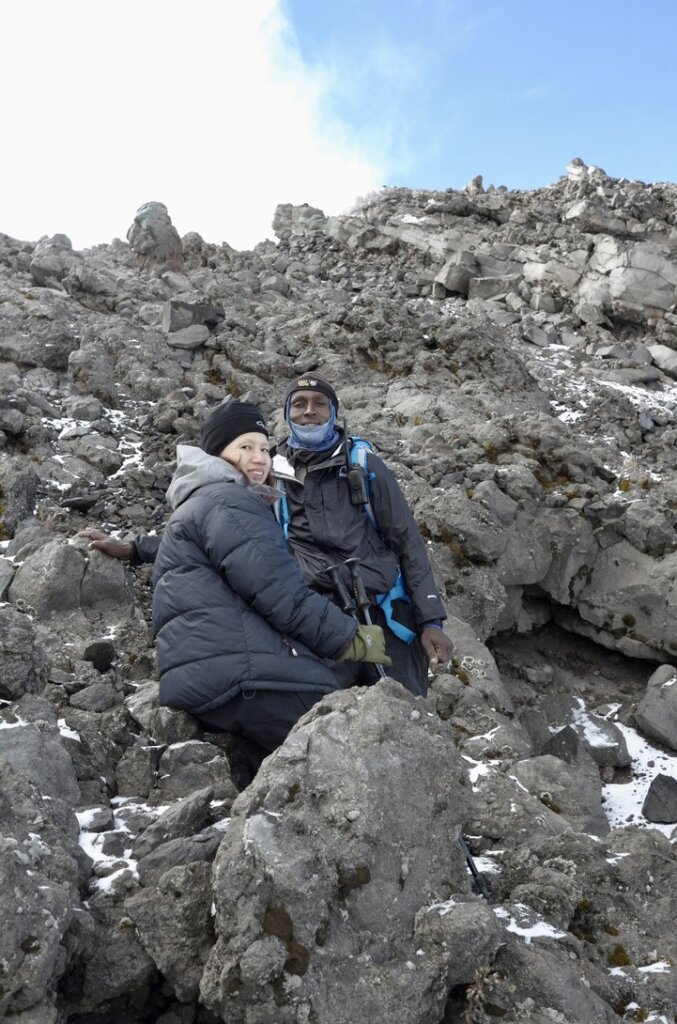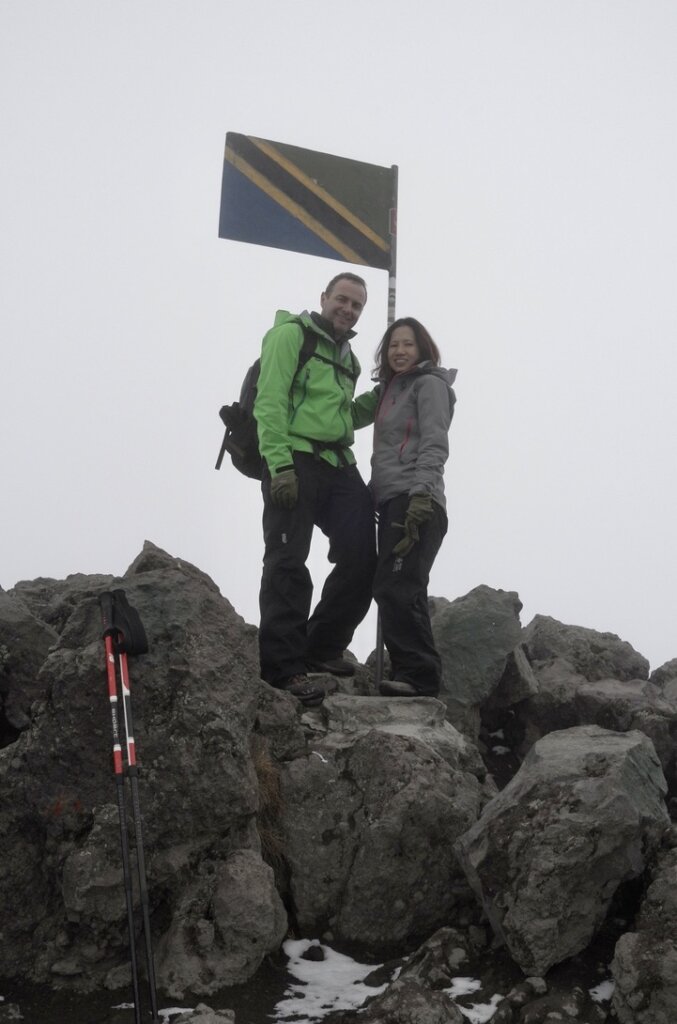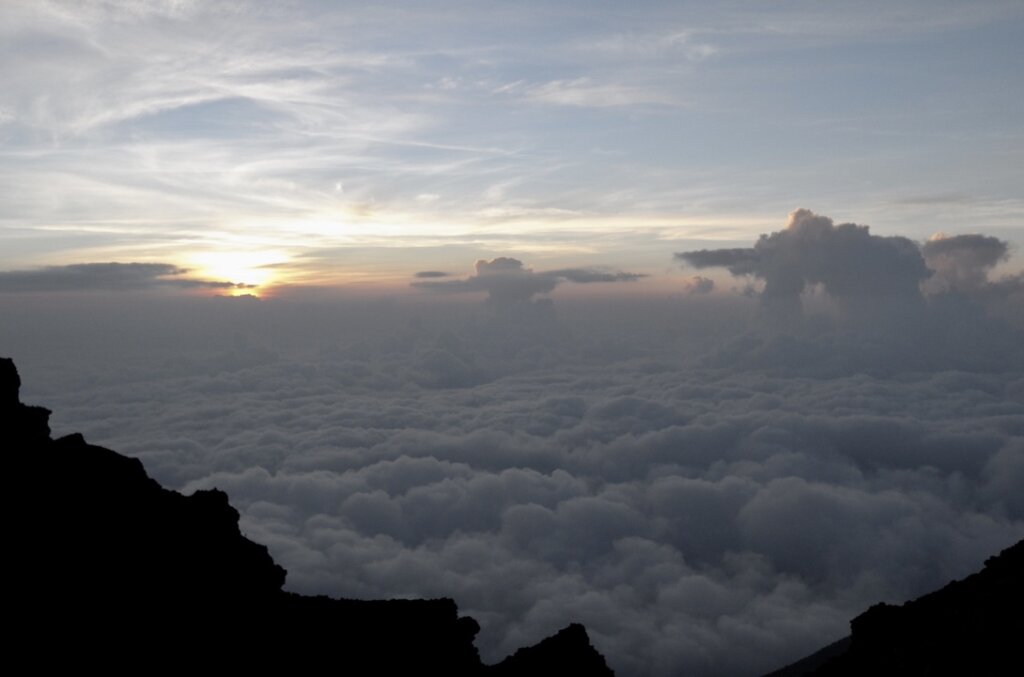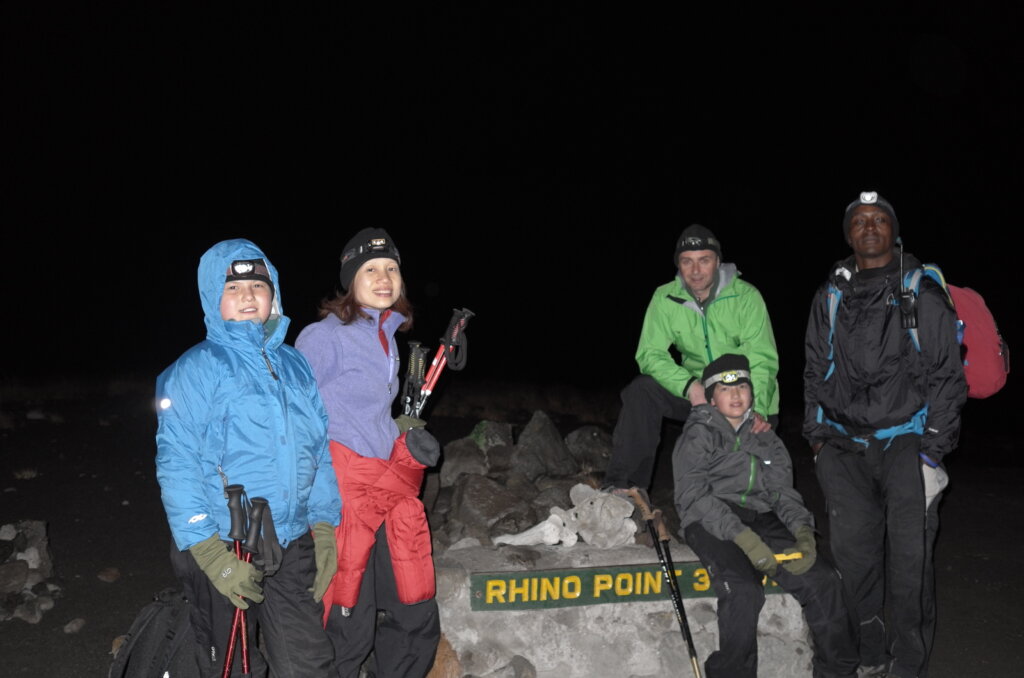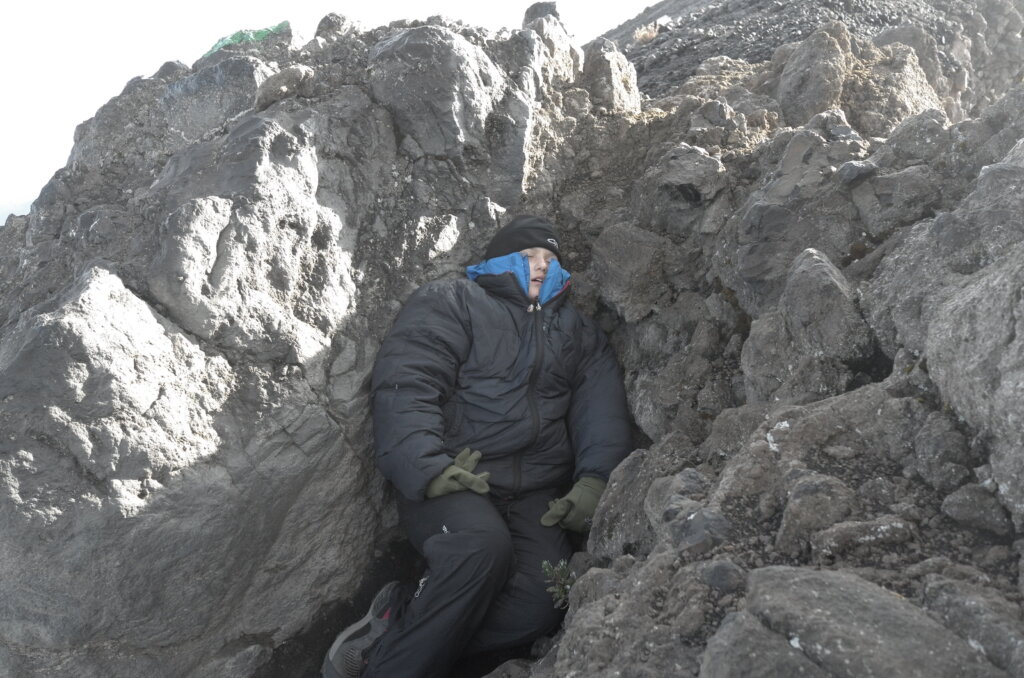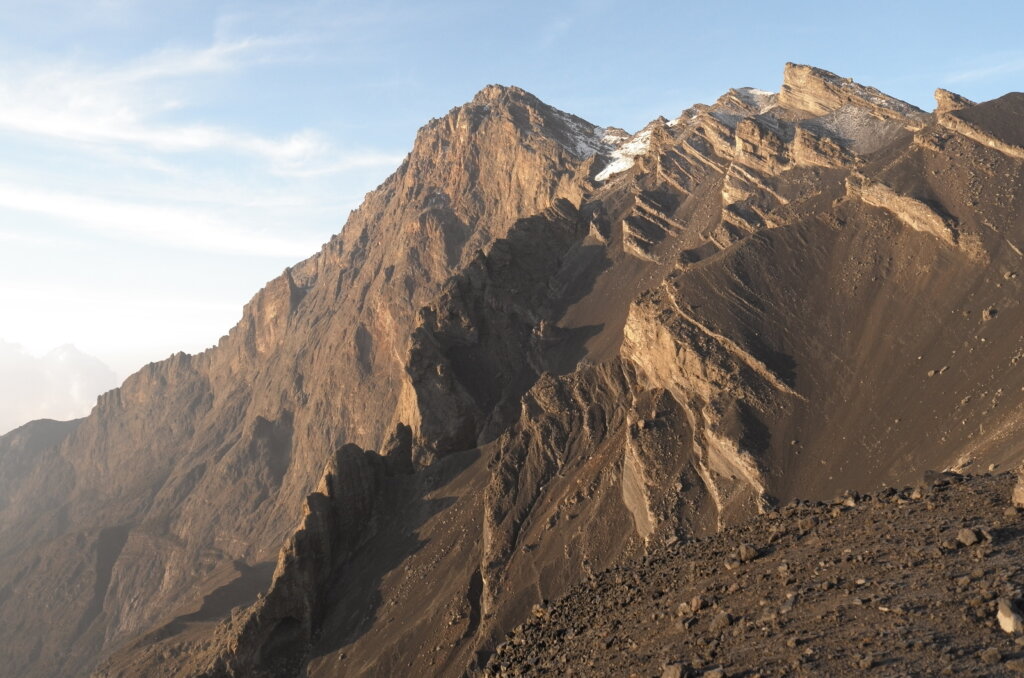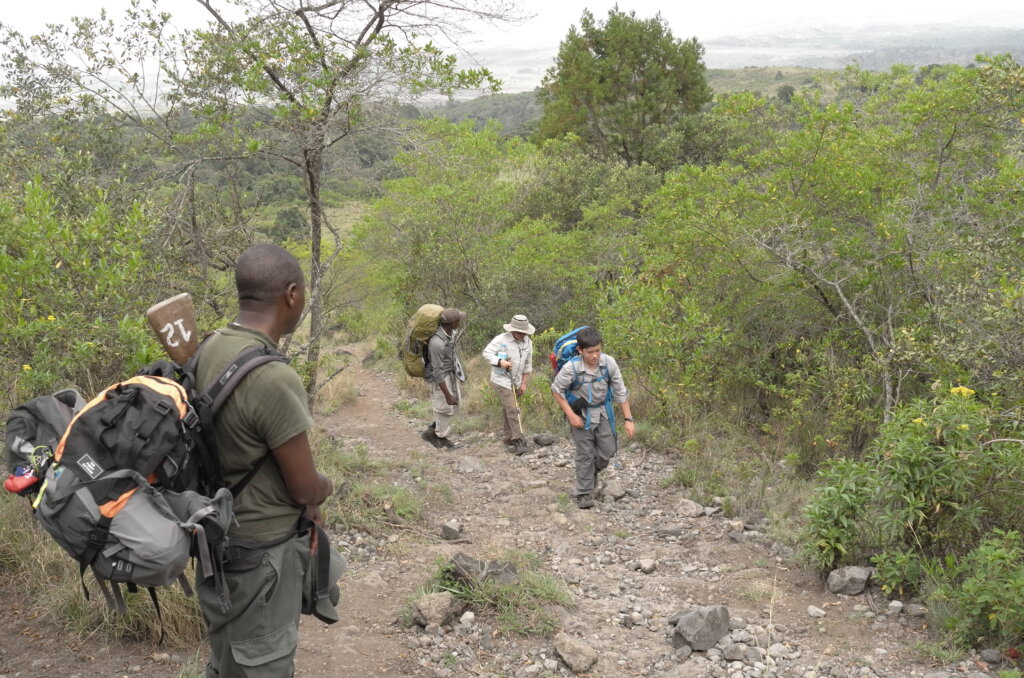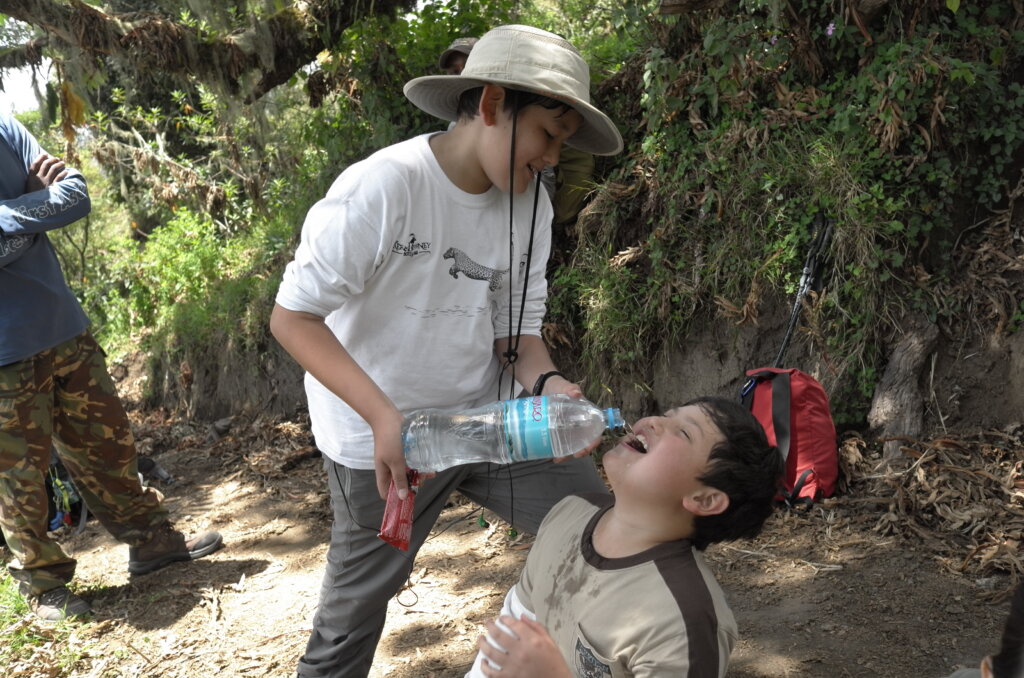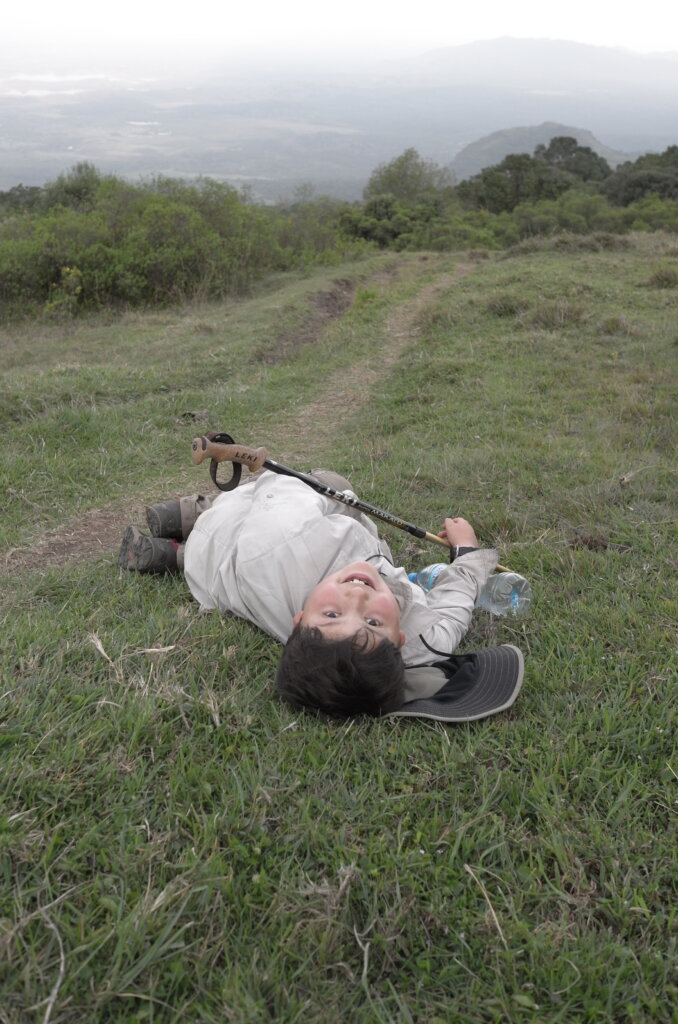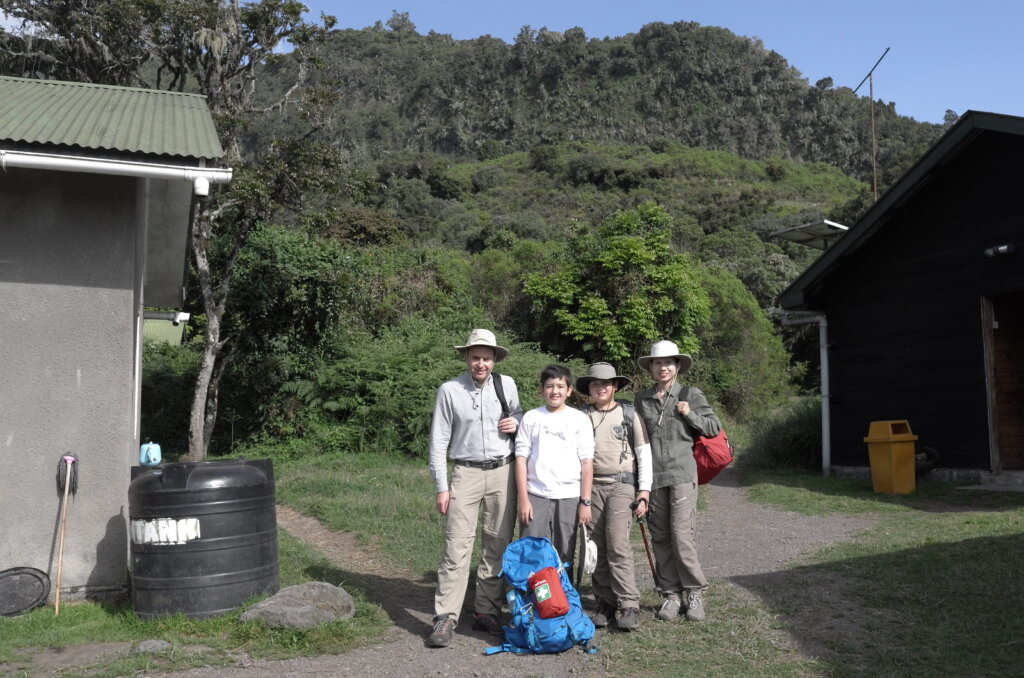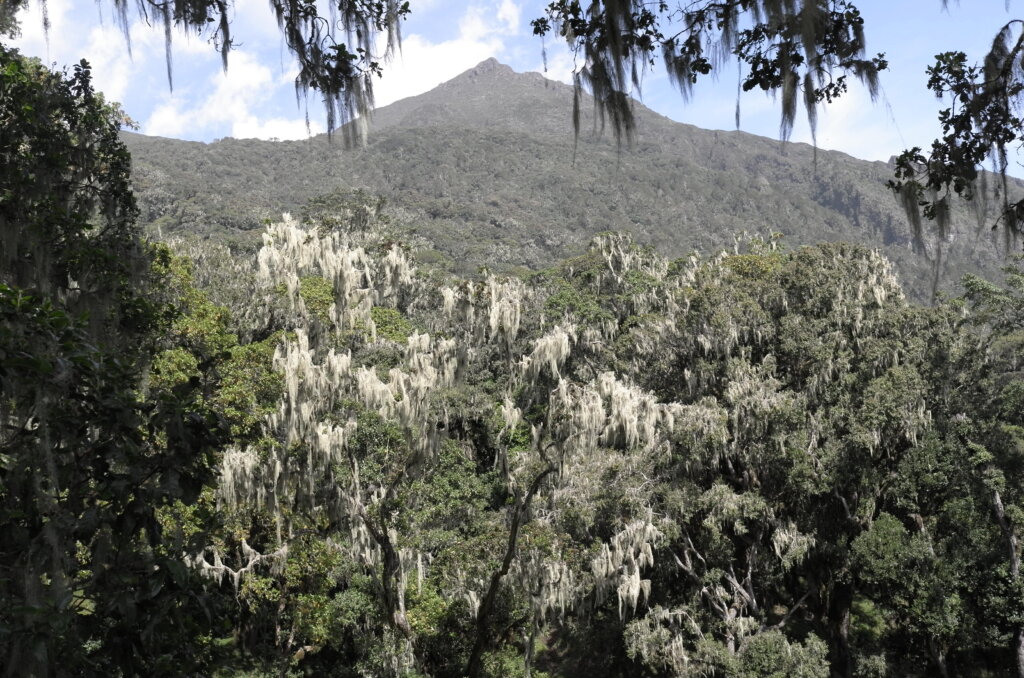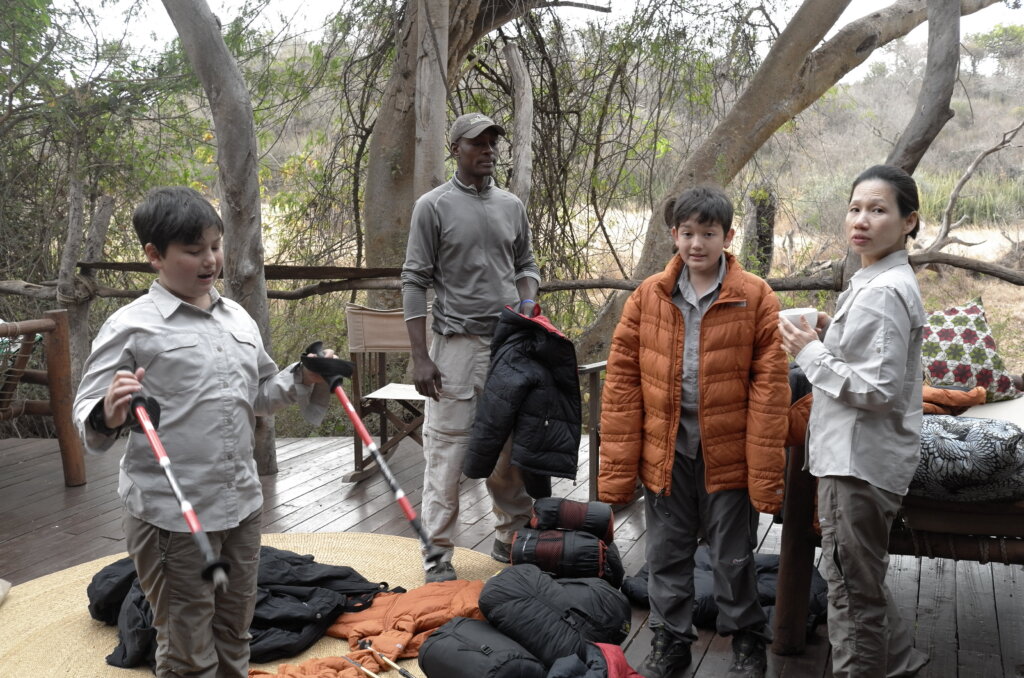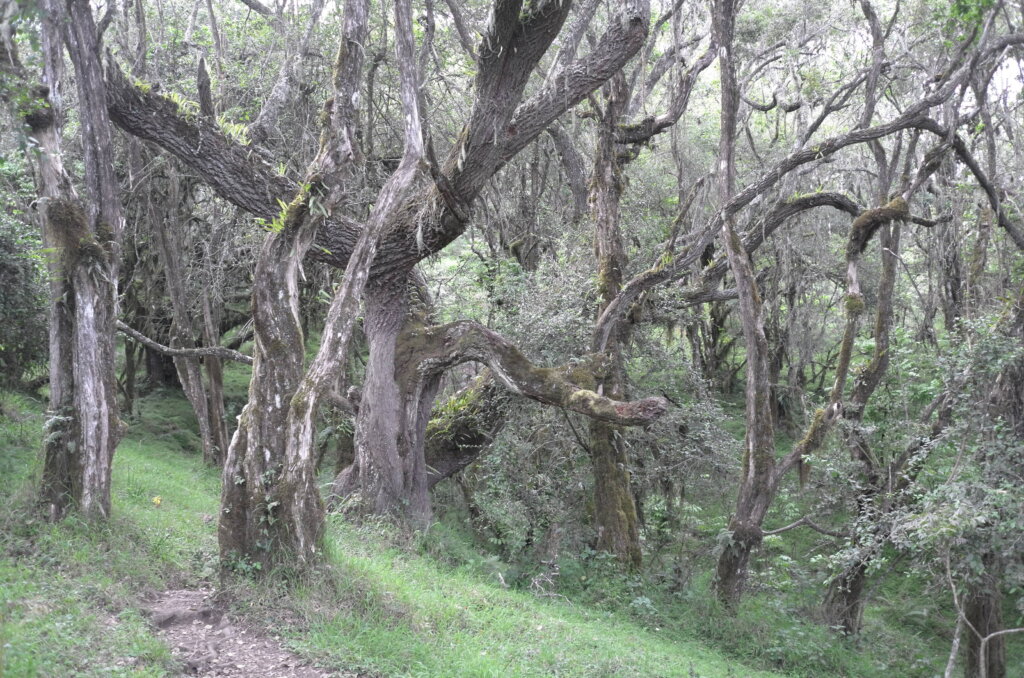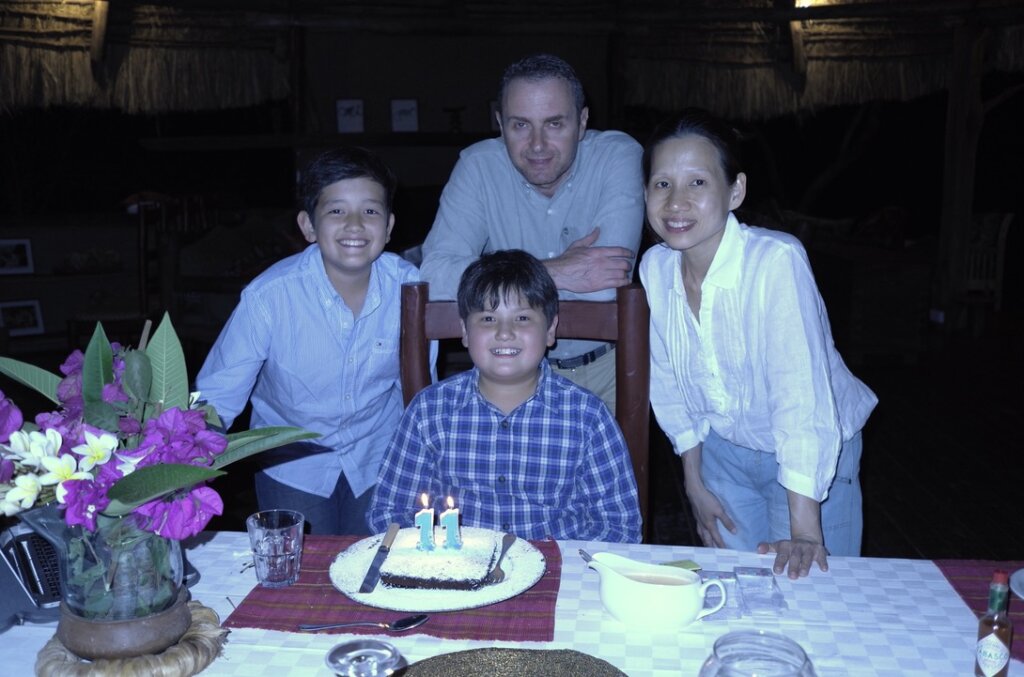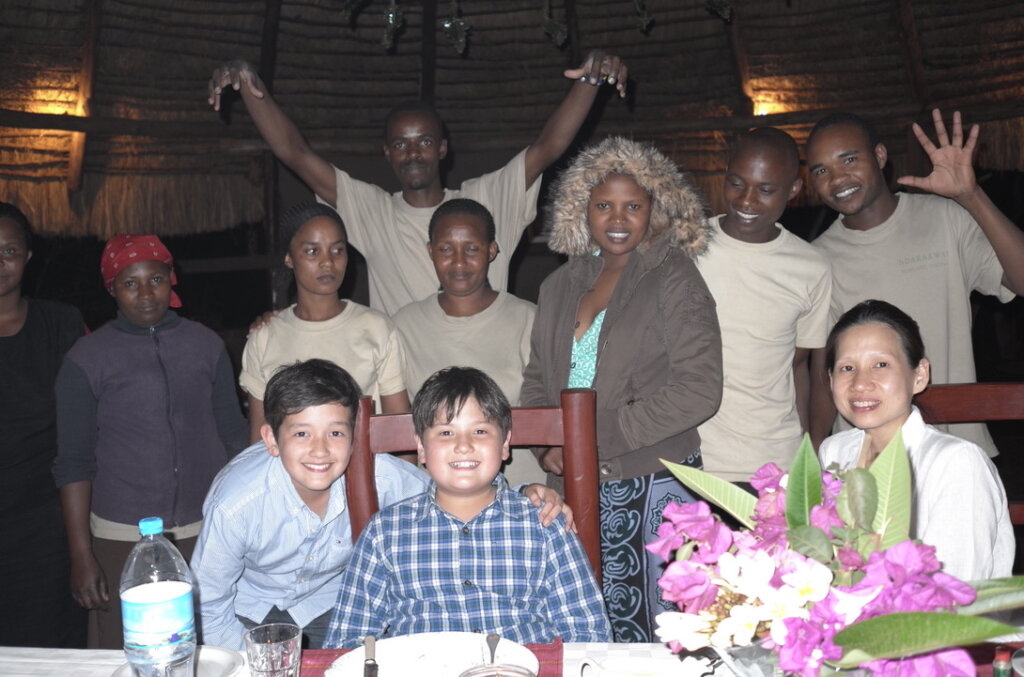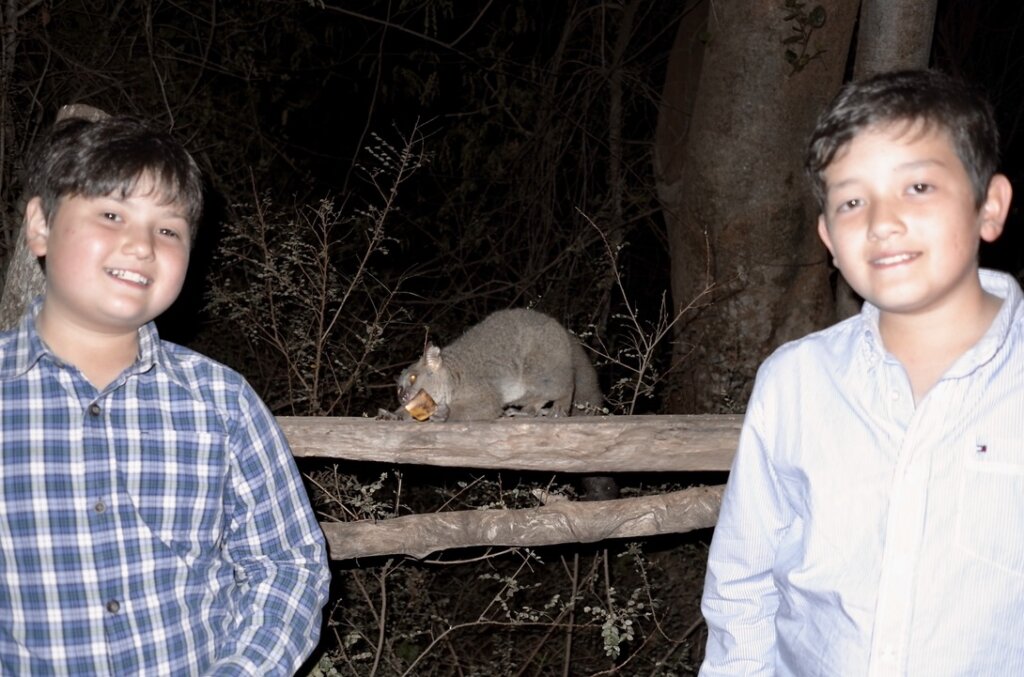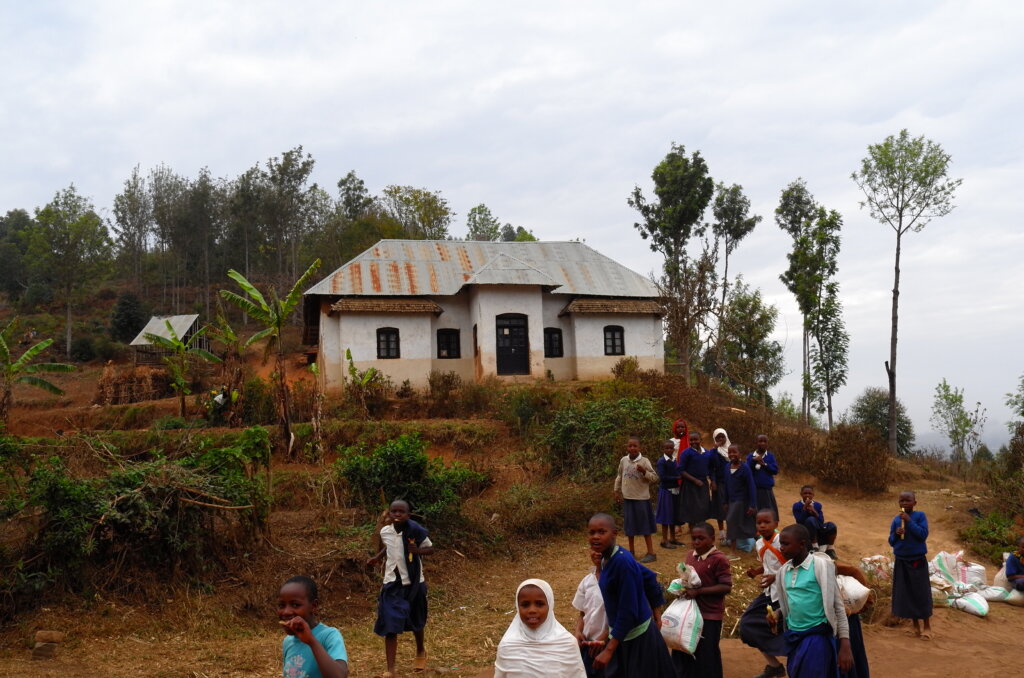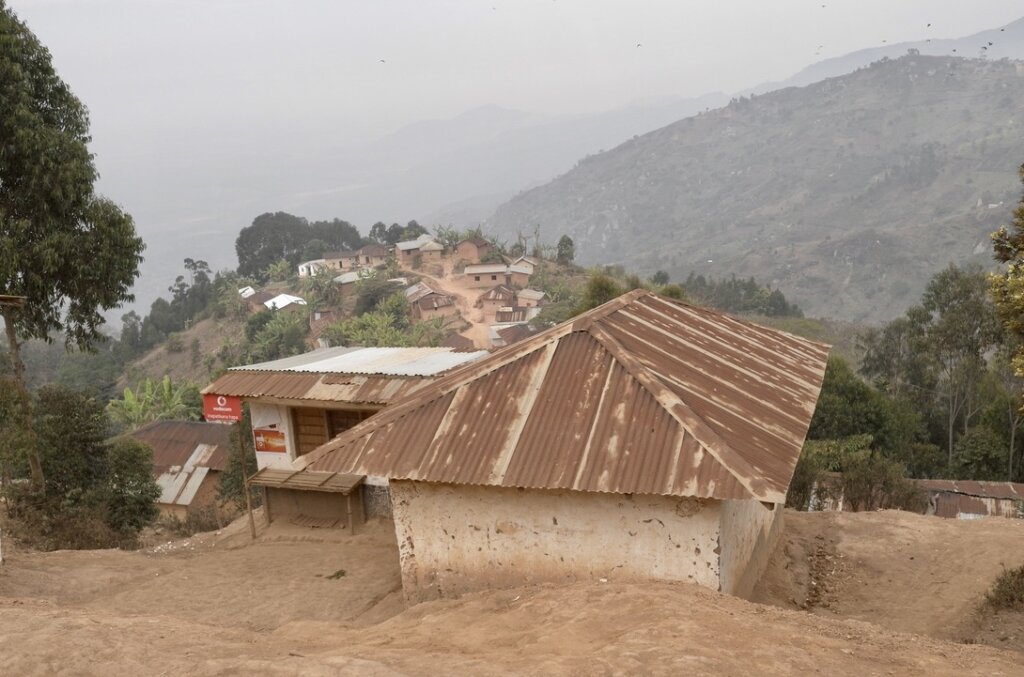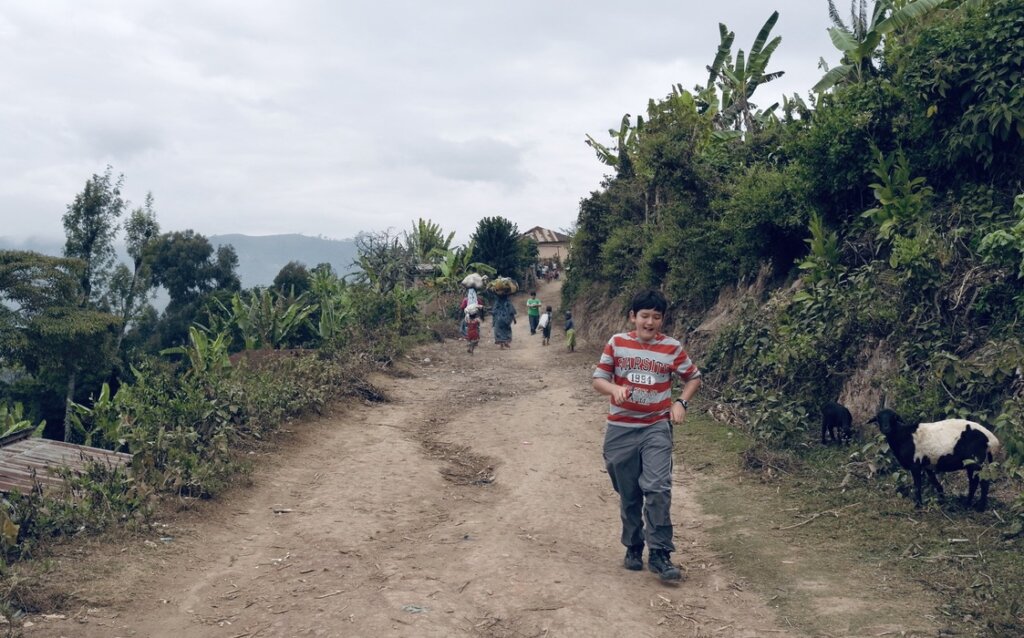Josh’s family set up “the Nest” 20 years ago when they used to come camping at Mkungunero, at the southernmost tip of the Park. It is a simple platform made up of multiple layers of broken twigs and branches on a gardenia tree overlooking the waterhole, eight metres above the ground. To call it a treehouse would be an exaggeration. It is more like a giant nest and has all the simplicity of one, including the absence of a ladder. So its temporary denizens either need wings to fly into it or…they need to climb up the tree !
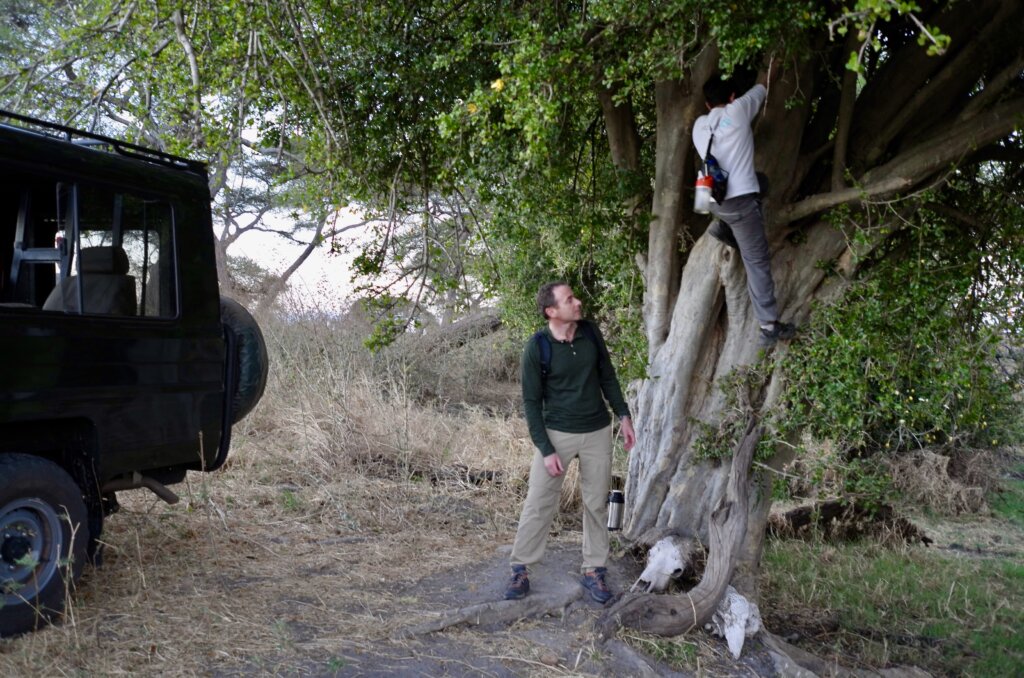

We spend a magical night in the Nest, with just our down quilts to separate us from the wild. As the sun sets, a long precession of animals makes its way to the waterhole and in the fading light, they become silent shadows dancing in the faint moonlight, a “wayang kulit” of the wild. As we lie on our backs in the Nest, the night sky fills up with stars and seems to envelop us until we are floating amongst the stars. Almost close enough to catch the tail of a shooting star and travel across the night with her. The crescent moon looks like a broken spotlight which only manages to cast a faint halo on the land around us.
